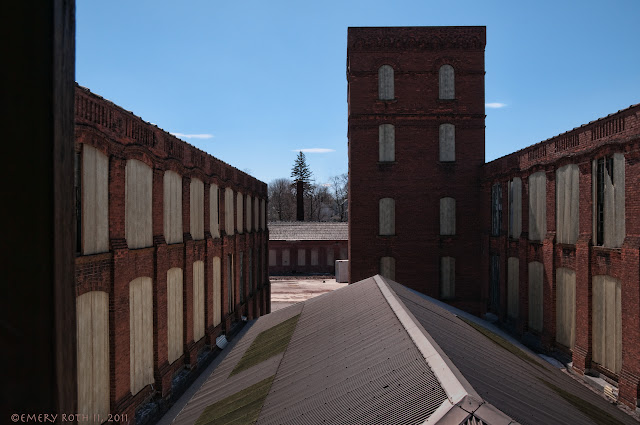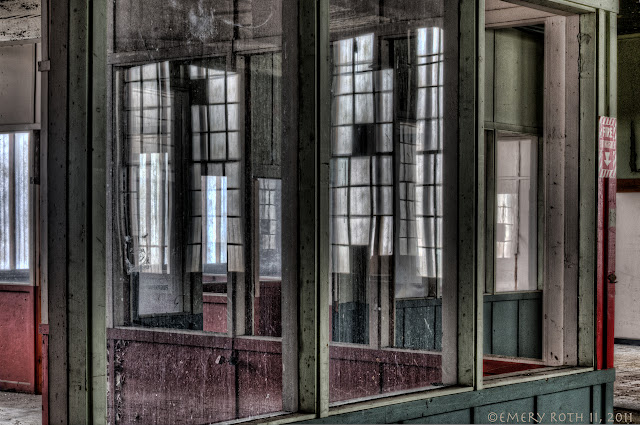PHOTOGRAPHER'S JOURNAL: The 1845 potato famine in Ireland coincided with the building of the railroad up the Naugatuck Valley, and so it was hungry and mostly illiterate, unskilled men with brogues who leveled the roadbed and laid the track along the river all the way to Winsted. Completed in 1848, it opened the valley to industry and carried the products of those industries to Bridgeport and the world. Trains brought coal, copper, zinc, tin, jobs and cheap labor and took away buttons and kettles, pins and pipes, clips and clocks. Brass was the plastic of its time; uses were burgeoning, and the Naugatuck Valley was competing with Birmingham, England, to be the brass-making center of the world.
How can I touch those struggles in the crumbling brick and rusting ducts that remain of this industrial empire? Where can my camera catch reflections of the imaginations fired by new engineering challenges and devising machines, procedures and new metallurgy to make things faster, better, cheaper? Where do the halls still echo the machinists' practiced craft and confidence? Where does the floor still creak from the daily passage of unskilled, buggy-luggers and grunts working 12-hour days and six day weeks or sometimes not working at all? Can photographs get near any of these?
Output at the mills fluctuated but industry boomed during the Civil War, and after the war the rest of us came and the Valley began to fill up. The trains brought Italians, and Lithuanians and Russians along with the coal and the copper and the tin. Like the Irish, many of us were illiterate and unskilled. In addition, we spoke no English.
Mill owners built villages to house us and systems to provide water and food, to keep the peace, and to manage town affairs. It was a massive undertaking to create civic institutions that would support the growing population. They hired prestigious designers like Cass Gilbert, McKim, Meade and White, Olmstead Bros. to design civic buildings and public spaces that would reflect the confidence of the region and provide a foundation of hallowed permanence. The policemen and firemen and the apprentices on the way up were mostly Irish, but we all formed clubs, gangs, factions and unions, and we were encouraged to back political candidates and vote. Banding in groups of our own kind, we struggled over identity, flexed muscle and sometimes rumbled.
Much of what the trains brought was pumped out into the Naugatuck or up into the air. It settled into everything, made the river smell and the air taste bad, and in Waterbury and Naugatuck people with money lived upwind, west of its stench. In Derby, whenever we passed the Hull Dye Works our children guessed at the river's color that day, but we worked hard and raised families as best we could. Those who worked at the pickle tubs got metal fume fever and called it spelters' shakes, and rollers lost arms, but workers with experience argued over the best cures - whether oatmeal or hot cider and pepper cured Spelters' Shakes better and warned us about how much of our arm we'd lose on each machine.
During the Great War there were plenty of jobs, 24 hours a day, and after the war there were strikes and violence in the Valley and in 1920 the National Guard was called in. There was bloodshed, and some were called subversives, but the mills kept growing, and some of us became foremen.
In the Smithsonian Museum in Washington, D.C. are prototype models of many of the machines that operated in these factories. There are thousands of them. They look like sophisticated toys, but they actually run. What's left today in these hollow spaces where the actual machines ran? What memories echo here? One must listen closely to hear the past behind the sound of the river and the wind.











